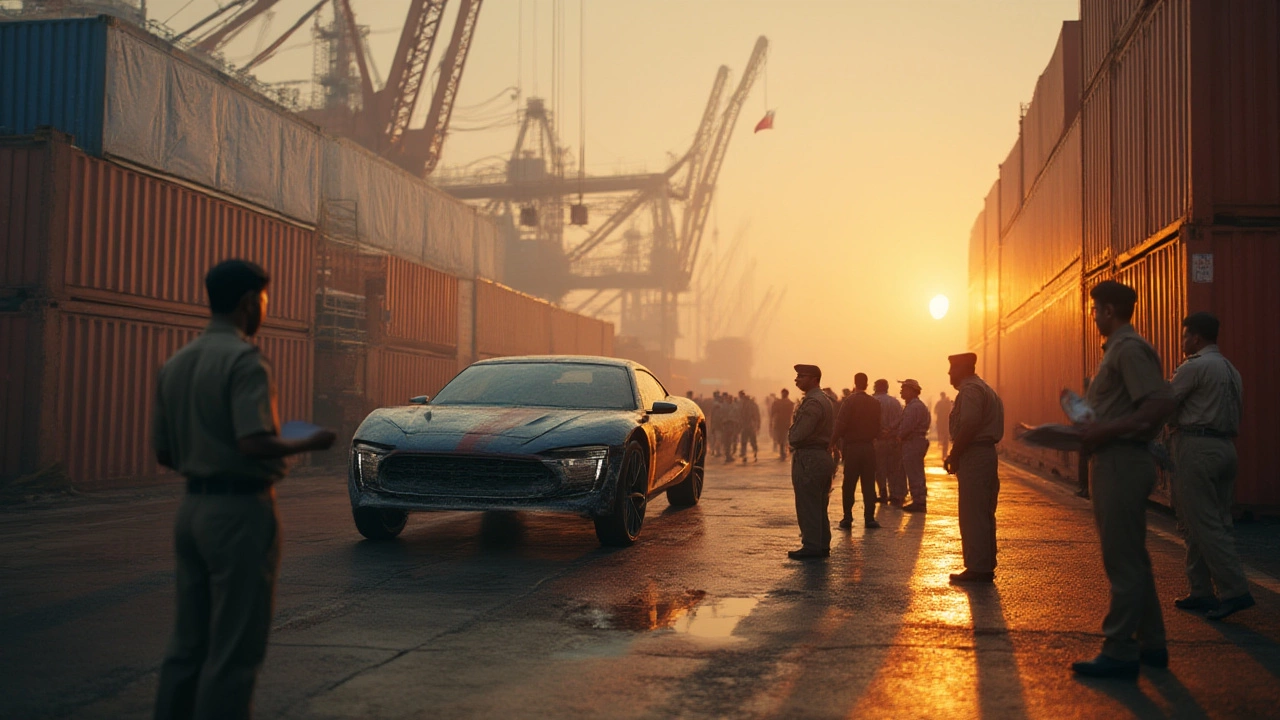How to Export a Car from USA to India: Rules, Costs & Step-by-Step Guide

People don’t just ship their dreams across continents—they sometimes ship cars, too. Plenty of folks look at their well-loved rides in the United States and wonder if it makes sense to bring them to India. With fancy models, collector items, or just cars with sentimental value, the urge to hit the road in India behind that familiar wheel can be strong. But here’s the kicker: India has complicated rules about what can roll onto its roads. So, can you export your car from the USA to India? Yes, you can, but you’ll want more than a one-way ticket and hope. There are tariffs, forms, deadlines, and a world of red tape waiting for you.
What Cars Can You Export to India?
First up, Indian bureaucracy isn’t here for every ride. The rules on what’s street-legal are strict—and they change for new versus used cars. New cars (less than 500 km driven, manufactured or assembled outside India, and not registered elsewhere) are allowed, provided they meet India’s environmental and safety standards. Used cars, meanwhile, face more hurdles: They must be less than three years old, right-hand drive, and comply with India’s Bharat Stage VI emission norms. Don’t expect to bring in anything that’s left-hand drive, no matter how much you love your Mustang—unless it’s a historic car or for special purposes (like an embassy).
There’s also a rule about importing only one car every two years per person. And if you’re thinking you can buy a luxury Tesla, drive it around America for a year, and then ship it over—think again. Used cars need their manufacturing year stamped on the vehicle and all documents. India’s Directorate General of Foreign Trade (DGFT) won’t just take your word for it. Mess this up and customs won’t even blink as your car gets stuck in port, racking up fees.
For non-resident Indians (NRIs) returning home for good, there’s a special allowance. If you’ve lived outside India for more than two years and are moving back, you can import one car under the Transfer of Residence clause. Still, all the usual emissions, safety, and registration rules apply. No matter your status, you’re in for detailed checks—be ready for the bureaucracy.
Step-by-Step Guide to Exporting Your Car from USA to India
Exporting your car isn’t just about booking a ship and waiting for delivery. Here’s a step-by-step roadmap so you don’t hit any potholes along the way:
- Check eligibility: Ensure your car meets India’s import criteria. This means checking emission standards (Bharat Stage VI since April 2020), being right-hand drive, and not exceeding the allowed age for used vehicles. For new cars, the odometer must read under 500 km before export.
- Obtain required documents: You’ll need the original bill of lading, invoice, insurance, bill of sale, registration, and emissions certificate. Some documents like a no-objection certificate (NOC) from the financing bank (if the car is financed) may be needed. DGFT import license may also be required.
- Hire a shipping company: Roll-on/Roll-off (RoRo) is popular since it’s cost-effective, but container shipping offers extra safety for high-value cars. Costs can range from $2,500 to $7,000 for standard cars.
- Arrange insurance: Make sure you have marine insurance for transit. Indian ports are bustling, and accidents happen.
- Clear US customs: File the Electronic Export Information (EEI) with US Customs. Skipping this step gets you fined. The shipping company usually helps with paperwork but ask questions!
- Handle arrival in India: Once your car lands, Indian customs get involved. They’ll check documents, valuations, emissions, and perform a thorough inspection. Be ready for some bureaucracy here.
- Pay import duties and taxes: Customs (see table below) charge hefty fees—often more than the car’s original value. Calculate this carefully before shipping anything. Payment receipts are essential for registration.
- Get the car certified and registered: You need a Roadworthy Certificate from an approved testing agency (like Automotive Research Association of India), a customs clearance certificate, and to register the car with your local Regional Transport Office (RTO). Bribe talk? Illegal—and crackdown is real these days.
Remember that incomplete paperwork means costly delays or even the car being shipped back or scrapped. Nothing stings quite like paying for a car to come a few thousand miles only to have it impounded.

The Real Cost: Customs Duties, Taxes, and Extra Charges
The Indian government isn’t shy about charging for foreign cars. Importing can cost much more than you expect. As of mid-2025, here’s the breakdown for import customs duties:
| Type of Vehicle | Basic Customs Duty | Total Effective Duty (approx.) |
|---|---|---|
| New Car (Petrol or Diesel) | 60% | Over 100% |
| Used Car | 125% | 140% - 180% |
| Motorcycle/Scooter | 50% (minimum ₹50,000) | Over 100% |
But there’s more. You’ll face GST, luxury tax if it’s an expensive model, cess, social welfare surcharges, and an additional registration fee with the RTO. On a $35,000 car, expect to pay as much as $65,000 once everything’s in (duties, shipping, insurance, port handling, agent fees). In some cases, you could buy the very same model new in India for less than the combined cost of importing. Crazy? Not for car lovers, but it’s a reality.
Here’s a tip: Always get a written quote from your agent—including all the fees. Expect tons of hidden charges: port storage, demurrage (storage over time), and handling. Indian port delays push up costs, with each day at port in Mumbai or Chennai often costing upwards of ₹2,000/day extra.
There can also be state-specific taxes. For luxury cars in big cities, road tax can hit 20% of the invoice value. Some states don’t allow “imported” cars older than three years to be registered, even if customs cleared them. Double-check what your local RTO asks for before your car lands.
Smart Tips, Common Pitfalls, and Real-World Insights
If you’re reading this and starting to sweat, you’re not alone. Many have found out the hard way that importing isn’t for the faint of heart. Some ended up with their dream car rusting in a Mumbai port warehouse, eaten by humidity and paperwork. Here are a few ways to avoid a nightmare:
- Work with an experienced import agent: They know the ropes, the people, and the system. Don’t go it alone, unless you thrive on tedious paperwork and uncertainty.
- Photocopy everything: No one in Indian customs ever gets tired of checking forms. Bring extra copies of every document—including your passport, visa status, shipping receipts, insurance, and the car’s full history.
- Track your shipment: Indian ports are busy. Track your car online and have someone on the ground ready when it arrives.
- Don’t skip insurance: Transit theft, cyclone damage, or dock accidents are not as rare as you think. Better safe than sorry.
- Budget at least 3-6 months: The process can drag, especially if multiple authorities get involved. Some cars sit at the port for months while emissions and customs checks are done.
Every year, customs in India seize dozens of vehicles for misdeclared value, improper paperwork, or emissions failures. If you’re banking on relaxed enforcement, think again. Smuggling or false documentation can land you with criminal charges and a permanent ban on importing vehicles.
But it’s not all headaches. Some people bring in their classic muscle cars and, after some drama, get their one-of-a-kind ride onto Indian roads—turning heads and lighting up car gatherings. For certain models (classics, collector’s editions, or high-end supercars never sold in India), the trouble and expense can be worth it.
One thing’s for sure: plan everything, don’t cut corners, and be ready for lots of paperwork and patience. With the right help, you can get your car across oceans and onto Indian highways. Just know what you’re getting into before you start the journey. The experience is not for everyone, but for car fans, it’s a cross-continental adventure worth telling at every traffic signal.